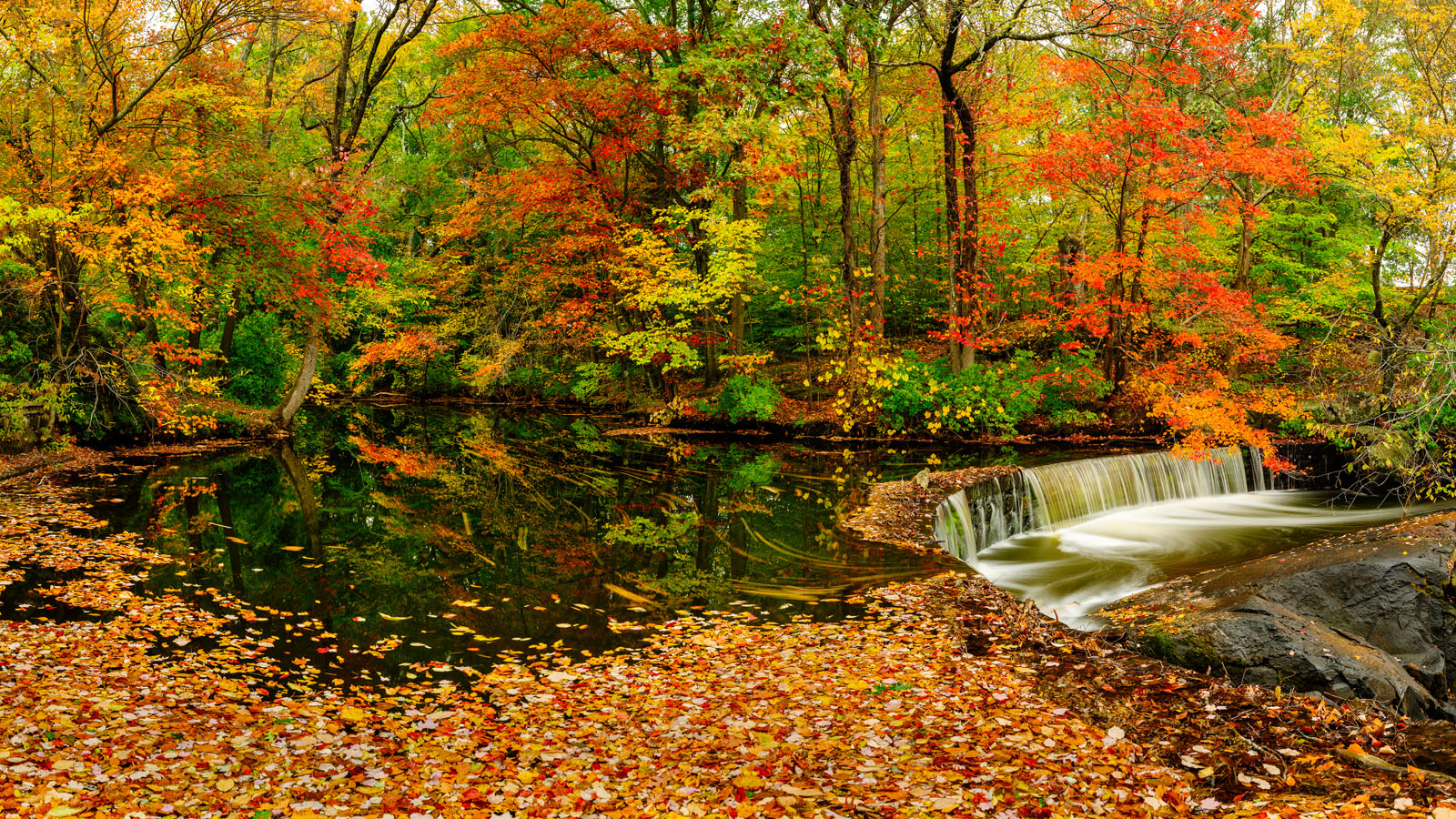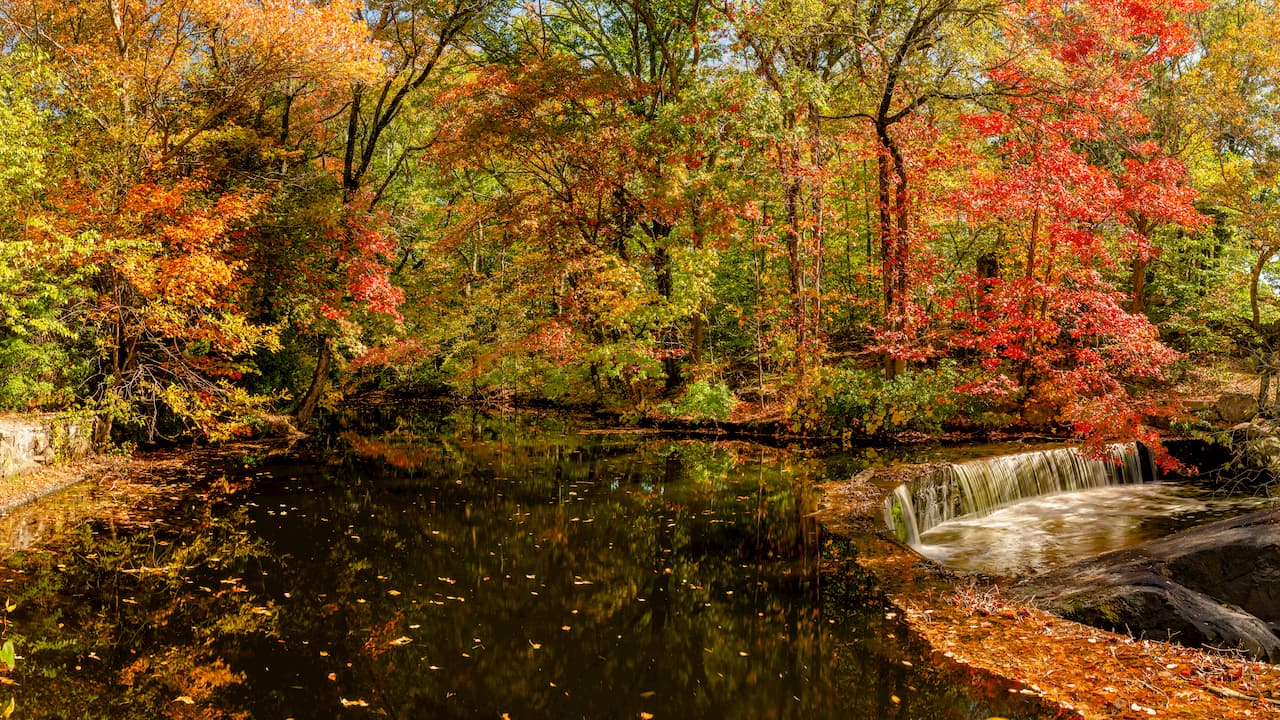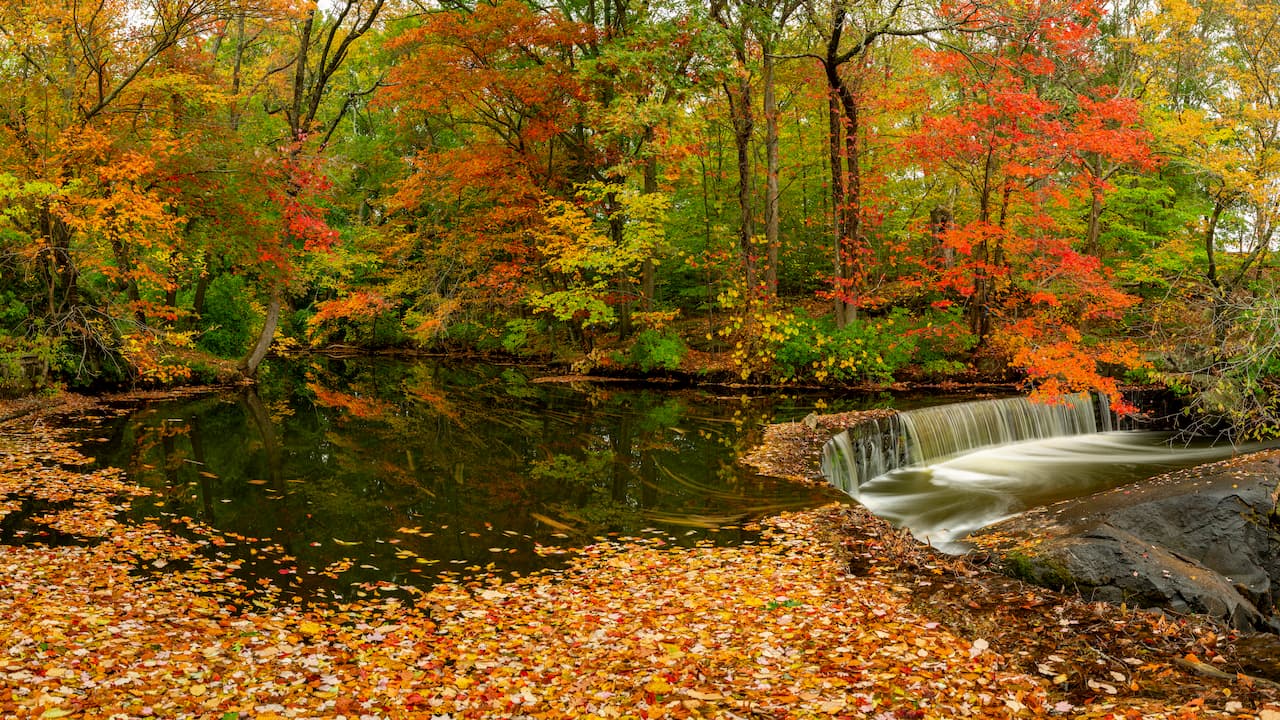The Best Conditions for Fall Foliage Photography - A Panorama at Hunts Mill Falls
16 October 2020

Two things that I love - photographing fall foliage and discovering new locations - recently came together nicely. Not long ago, I learned of this beautiful little spot tucked away in Rumford, Rhode Island, and a drizzly and still Friday morning yielded the perfect conditions to photograph it.
A few days before, I had been in the area for an errand and ran by with my camera to scout the location. At that point the foliage was looking very good but it was a bright sunny day, which can make for nice leaf-peeping weather but doesn’t work as well for photography. The reason being is direct sun falling on leaves leads to higher-contrast scenes that tend to wash out the richly saturated colors of the leaves. Here’s a quickly-edited image I took on that scouting trip - you can see that despite my edits to try and bring it out, the foliage lacks the richness of the final image.

Instead of going out when the sun is out, look for opportunities when the sky is overcast. If there is rain to make the leaves wet, even better, as the water on the leaves will naturally bring out the richest color. To get the very richest colors (especially if the leaves are wet), you’ll be helped by having a circular polarizing filter, which will filter out the specular reflections and glare on the leaves, leaving only the deeply saturated tones of the leaves themselves.
When I arrived on Friday, the conditions were just about perfect. Scattered rain that morning had left the leaves wet, the sky was overcast, and perhaps most importantly, the air was quite still with only a little bit of occasional wind, leaving mirror-like reflections in the water and permitting the long exposures without the leaves moving. Considering different possible compositions, I settled on a camera location that placed a large mass of backed-up floating leaves at the entrance to a fish ladder along the bottom edge of the image. I went to work to set up a multi-shot panorama with a 35mm prime lens. Below, you can see my setup and process for capturing the panorama.
In the end, I went with a longer exposure facilitated by the use of a 6-stop Neutral Density (ND) filter, which brought the time for each exposure to 20 seconds and turned the leaves moving slowly down the river into streaks, giving more sense of movement in the otherwise glassy still pool above the falls. That would have made for a very long video, but the process is essentially the same - just much more time between each press of the shutter button. I spent a while taking multiple panoramas in case there was an issue with one, and then spent a little extra time trying a few additional compositions and exploring some of the nice little trails running along the Ten Mile river.
Once I got home, I loaded the panorama frames up in Adobe Lightroom and they stitched together without any issues (thanks in large part to having a good setup for capturing panoramas). Shooting in good conditions meant the product out of Lightroom was fairly close to the final product, as is apparent from the lightroom export:

From this starting point, there was a little work in Photoshop to remove some blue flags on branches, some dodging and burning, some local curve adjustments, and some global tweaks to saturation and color in order to arrive at a final image that happens to be at a 16:9 aspect ratio, making it a great option for a desktop background to help you enjoy this season. And of course, if you’d like to put something like this on your wall, this image as well as many others are available as prints.